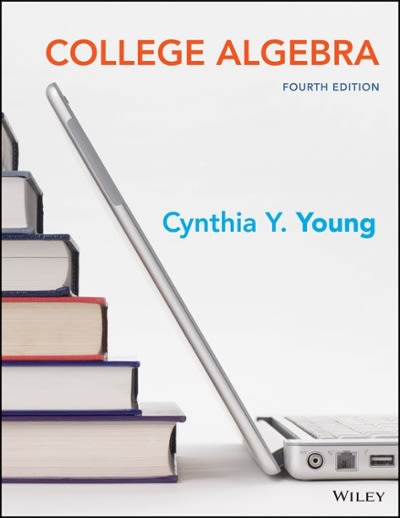Question
Question 1: (a) Consider the following data, what data type (i.e, Numeric continuous, Numeric discrete, Categorical ordinal or Categorical nominal) are they? (i) Education level
Question 1:
(a) Consider the following data, what data type (i.e, Numeric continuous, Numeric discrete, Categorical ordinal or Categorical nominal) are they?
(i) Education level of employees (primary, high school, university)
(ii) Occupation of the husband in a household (police officer, nurse, civil servant, business person, others)
(iii) The number of heads in 100 coin flips
Question 2:
(a) A set of cereal sodium content measurements is as follows: 0, 340, 70, 140, 200, 180, 210, 150, 100, 130, 140, 180, 190, 160, 290, 50, 220, 180, 200, 210.
(i) Calculate the sample mean.
(ii) Calculate the sample deviation.
(b) The Q1, Q2 and Q3 values of this data set are 135, 180 and 205 respectively.
(i) Calculate the end-points of the whiskers in the Box Plot.
(ii) Does this data set have any outlier? Give reason.
Question 3:
MultiAngle is a NSW-based indigenous business specialised in providing tailor-made travel insurance. The CEO is assessing MultiAngle's investment in three platforms where its advertisement runs: social media, TV and radio. The following table shows the descriptive statistics of profit per month (dollars in thousands) generated from Social Media, TV and radio advertisement, based on 12 monthly profit figures in a randomly chosen year.
Platform Mean Variance
Social Media 12.17 46.27
TV 13.6 10.24
Radio 5.3 0.81
(i) Calculate the coefficient of variation for each platform.
(ii) Relative to each platform's mean return achieved, which option generates the greatest volatility in profit?
Step by Step Solution
There are 3 Steps involved in it
Step: 1

Get Instant Access to Expert-Tailored Solutions
See step-by-step solutions with expert insights and AI powered tools for academic success
Step: 2

Step: 3

Ace Your Homework with AI
Get the answers you need in no time with our AI-driven, step-by-step assistance
Get Started


